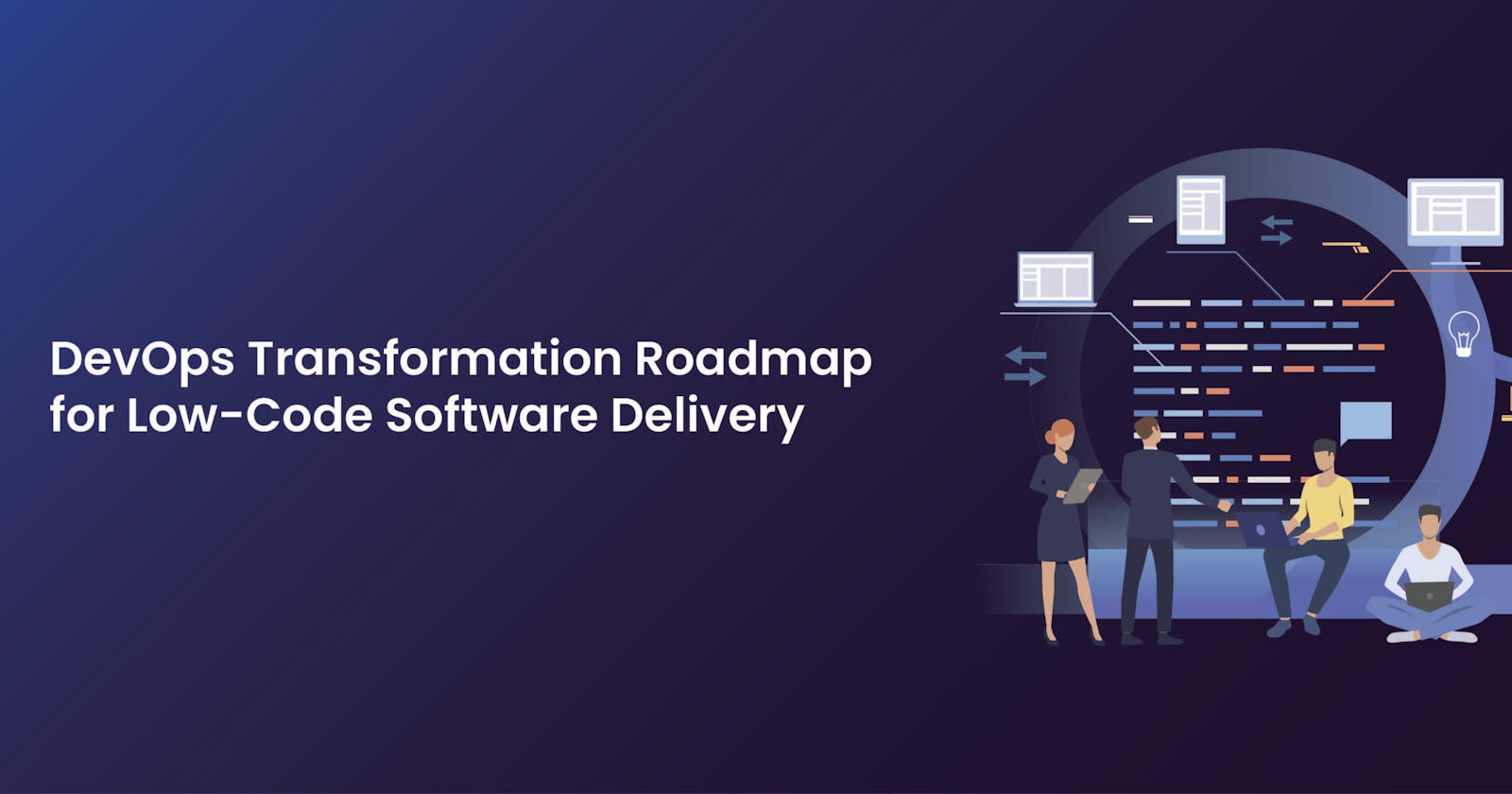DevOps has become the backbone of software development and delivery processes in modern organizations. The integration of development and operations teams, along with automation and collaboration, enables faster and more efficient software development. However, with the emergence of low-code development platforms, the DevOps transformation roadmap needs to be adjusted to accommodate the unique requirements of low-code software delivery.
In this article, we will explore the key steps in the DevOps transformation roadmap specifically for low-code software development, supplemented by real-world examples.
What is Low-Code?
Low-code is a software development approach that allows for the creation of applications with minimal hand-coding. It speeds up software delivery by using visual development tools and drag-and-drop features to automate aspects of the development process, reducing dependency on traditional coding approaches. This approach enables more people, including those with limited coding experience or knowledge, to contribute to application development.
With low-code development platforms, developers can build applications using graphical user interfaces, drag-and-drop functionality, and visual guidance, eliminating the need for extensive coding skills. These platforms use a model-driven, drag-and-drop interface, where developers can visually design components and workflows, and logic is captured in a declarative manner.
6 Steps for DevOps Transformation Roadmap for Low-Code Software Delivery
1. Assessing Current State
Before embarking on any transformation journey, it is crucial to assess the current state of your organization's low-code software delivery process. This involves evaluating your existing low-code development platform, examining the level of integration between development, operations, and other teams, and identifying any gaps or bottlenecks that hinder efficient software delivery.
Example: Suppose a company is using a low-code development platform called XYZ to build and deploy applications. The platform lacks proper version control capabilities, resulting in issues around code management and collaboration between developers and operations teams.
2. Definition of DevOps Goals
The next step is to define the specific goals to be achieved through the DevOps transformation roadmap for low-code software delivery. This can include increasing release frequency, improving overall software quality, reducing time-to-market, enhancing collaboration between teams, and ensuring seamless integration of low-code development within the broader DevOps ecosystem.
Example: The company aims to increase the release frequency of applications built on the XYZ low-code platform by transitioning to a more streamlined and automated CI/CD pipeline.
3. Tooling and Infrastructure Design
To enable successful low-code software delivery, it is essential to select the right set of DevOps tools and design the underlying infrastructure stack. This includes choosing tools for version control, continuous integration and delivery, testing, monitoring, and deployment automation that are compatible with low-code development platforms. The infrastructure design should address scalability, security, and monitoring requirements, accommodating both traditional and low-code development models.
Example: The business decides to integrate Git for source code management, Jenkins for continuous integration, Selenium for automated testing, and Docker for containerization within their existing infrastructure.
4. Cultural Alignment and Training
DevOps transformation is not just about adopting new tools and technologies; it is equally important to foster a culture of collaboration and continuous improvement. By aligning teams from development, operations, and other functions, and providing training on DevOps practices, organizations can ensure seamless collaboration and communication across the low-code software delivery lifecycle.
Example: A company dealing with big-scale employment conducts workshops and training sessions for both developers and operations personnel to familiarize them with DevOps principles, practices, and tooling integration specific to low-code development.
5. Process Automation and Integration
Automation plays a vital role in the low-code software delivery process. By automating repetitive tasks and integrating different stages of the software development lifecycle, organizations can minimize manual intervention, reduce errors, and enhance the overall efficiency of low-code delivery. This includes automation of code merging, building, testing, deployment, and monitoring processes using appropriate tools and technologies.
Example: Introducing a CI/CD pipeline using Jenkins, Git hooks, and automated testing frameworks to automate the delivery process and ensure consistent quality.
6. Continuous Improvement
Continuous improvement is a fundamental principle of DevOps. Organizations should regularly review their low-code software delivery processes, seeking feedback from all stakeholders, and identifying areas for optimization and enhancement. Collecting and analyzing metrics related to release frequency, defect rates, customer satisfaction, and application performance can provide valuable insights for further improvements.
Example: A Global company conducts retrospective meetings at the end of each sprint to identify bottlenecks, address feedback, and continuously refine their low-code software delivery practices.
No-Code Success: How to Automate Using No-Code Platforms
Identify automation opportunities in your workflows.
Select a suitable no-code platform.
Map out the workflow or process you want to automate.
Build and configure the automation logic using the visual interface.
Test and refine the automation based on feedback.
Deploy the automation and provide training.
Monitor the automation's performance and optimize as needed.
Conclusion
Low-code development platforms have rapidly gained popularity due to their ability to accelerate software delivery. However, optimizing low-code software development for DevOps practices requires a tailored roadmap. Implementing such a roadmap will use the full potential of low-code development, leading to faster, more reliable, and efficient software delivery. Ready to streamline your software development using low-code platforms? Let CloudStakes Technology guide you through a tailored roadmap for successful DevOps integration. Take the first step and visit us today to explore our DevOps services and achieve enhanced software development efficiency.
